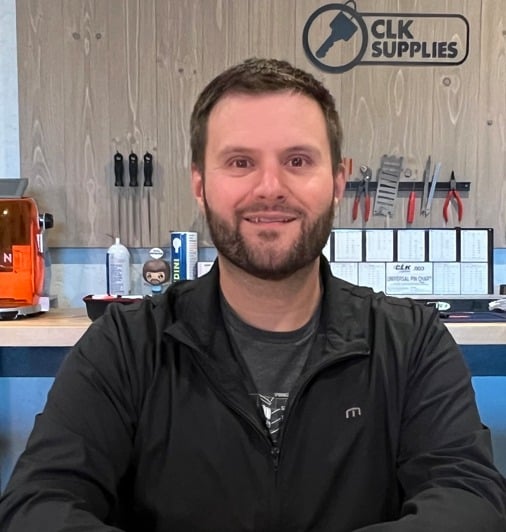on all orders over $150*
on all orders over $150*
on all orders over $150*
on all orders over $150*

If you've ever used a key cutting machine and stared at those 4-way jaws, you might have wondered what all those different jaw settings are for. Some key cutting machines have jaws labeled "A" and "B" or "1" and "2." On a four-way jaw, you’ll typically see labels like "A, B, C, D" or "1, 2, 3, 4," depending on the manufacturer. Now, if you’ve found yourself puzzled by this, don’t worry—you’re not alone! Many locksmiths tend to stick with Jaw A and call it a day. But using only one jaw can lead to issues, especially with double-sided or foreign automotive keys.
Let’s dive into the four-way jaws and how understanding them can improve your key-cutting skills, making your job easier and more precise.
Each jaw setting is designed for specific types of keys, so using the right one can help you avoid problems like:
Mastering these jaws can be a game changer for your key-cutting business.
Jaw A (or Jaw 1, depending on the machine) is typically the default for common keys like Kwikset (KW1) and Schlage (SC1). Both the top and bottom parts of this jaw are flat, which means it grips the key on both sides securely.
Pro tip: Always double-check that both sides are clamped with the same jaw setting before you start cutting. Otherwise, you could damage the key or machine.
Jaw B (or Jaw 2) works similarly to Jaw A but isn’t as deep, making it ideal for smaller keys like the M1 or certain mailbox keys (RA3, RA4). While some locksmiths try to use Jaw A for these smaller keys, it’s not the best fit.
Jaws C and D are where things get fun (or tricky, depending on your outlook). These jaws have grooves designed for keys that won’t sit properly on a flat surface.
Using Jaw C is crucial for keys that have less "meat" to clamp onto. If you try to cut these on Jaw A, the key might not stay in place, leading to errors or worse—a flying key!
Jaw D is basically the mirror image of Jaw C. The difference is that the groove is on the opposite side, making it perfect for other specialty keys like the B10.
One key that gives many locksmiths trouble is the B106 (or B111). You can either use adapters to cut it on Jaw A or, better yet, cut it on Jaw C or D without adapters. Here’s how:
With the groove aligned properly, you’ll get a perfect cut every time, without the key slipping or shifting.
By mastering these different jaw settings, you’ll be able to cut a wider variety of keys with greater accuracy and efficiency. So next time you’re working on a tricky double-sided automotive key or a small mailbox key, remember to switch those jaws!
Master these 4-way jaws, and you’ll elevate your key-cutting game to the next level!
Here is a link to the PDF explaining the 4-way jaws used in the video.
Article by PJ Slauson
In 2004, PJ Slauson (then only 19 years old) was working as a locksmith for his dad’s locksmith company and going to college. His dad had a little DBA side business selling locksmith supplies to locals. He had a few shelves in the back of his key shop with some keychains and padlocks which PJ started selling online to make a little extra money.He quickly sold out, eventually PJ decided to setup his own website, and clksupplies.com took off immediately.

